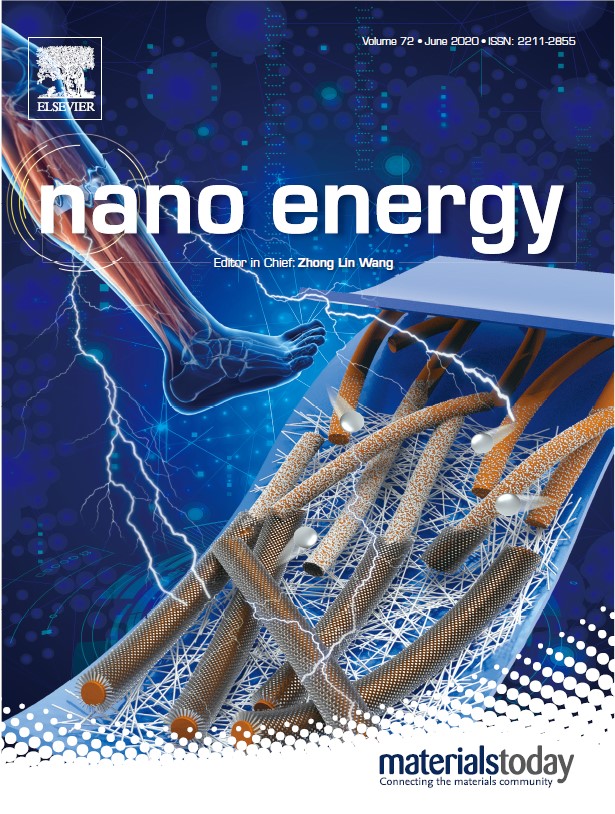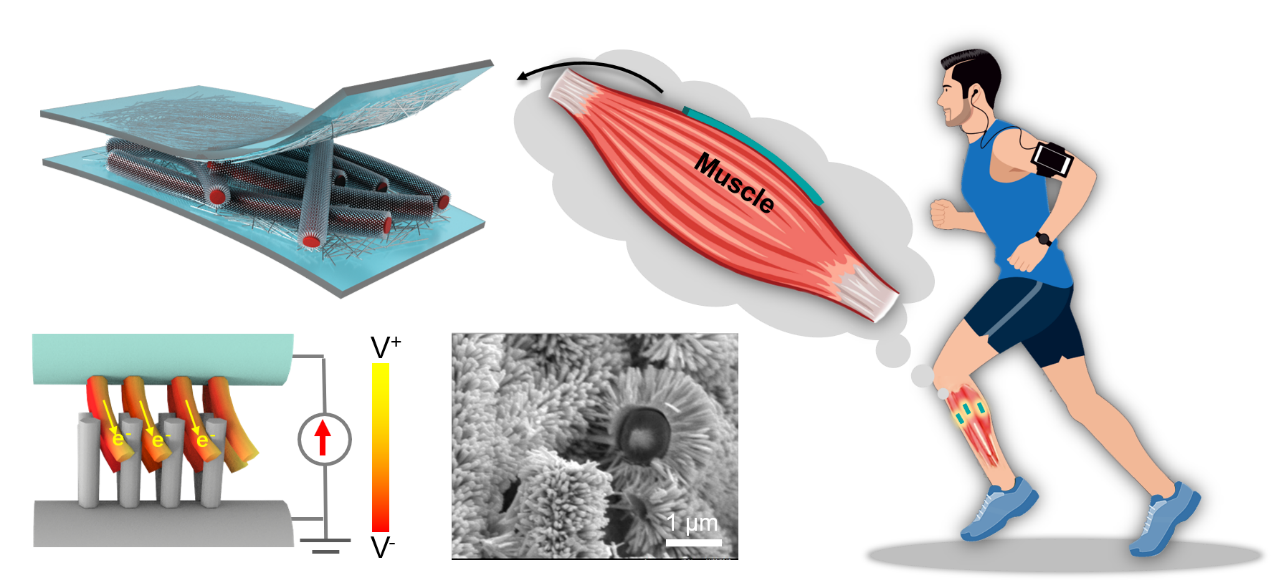Recently, on the basis of previous work (Nano Energy, 2019, 55, 516), professor Weiqing Yang group re[orts a three dimensional hierarchically interlocked PVDF/ZnO nanofiber-based piezoelectric sensor through epitaxial growing ZnO nano rods (NRs) on the surface of electrospinning PVDF nanofibers, which enables the fiber-based physiological monitoring electronics (PME) of well flexibility and high gas permeability. Due to synergistic piezoelectric effect of the effectively deformed interlocked ZnO NRs and the uniformly orientated PVDF nanofibers with high electroactive phase, the sensitivities of PME in both pressing and bending modes have been greatly improved 6 times and 41 times than that of pure PVDF nanofibers respectively. On this basis, the designed PME can precisely detect the complexly subtle physiological signals of respiration, wrist pulse and muscle behavior. Moreover, a sensitive gait recognition system was successfully developed based on PME arrays. Therefore, this proposed fiber-based device provides an alternative strategy to monitor the human subtle physiological signals and demonstrates promising potential in the expanded application of healthcare and clinical diagnosis. This work was published in Nano Energy as “Hierarchically structured PVDF/ZnO Core-Shell Nanofibers for Self-powered Monitoring Electronics”, and selected as the cover paper. Professor Yang Weiqing and Senior Engineer Deng Weili were co-corresponding authors of the paper, and Graduate Student Yang Tao was the first author of the paper. The school of Materials Science and Engineering, Southwest Jiaotong University is the first unit of this paper. This work has been supported by the National Natural Science Foundation of China, Southwest Jiaotong University and the School of Materials science.
Article:http://www.polymer.cn/UploadFile/research/202006032030262105.pdf

Figure 1.Cover image of this article

Figure 2. The three-dimensional hierarchically interlocked PVDF/ZnO fibers-based PME for muscle behavior monitoring